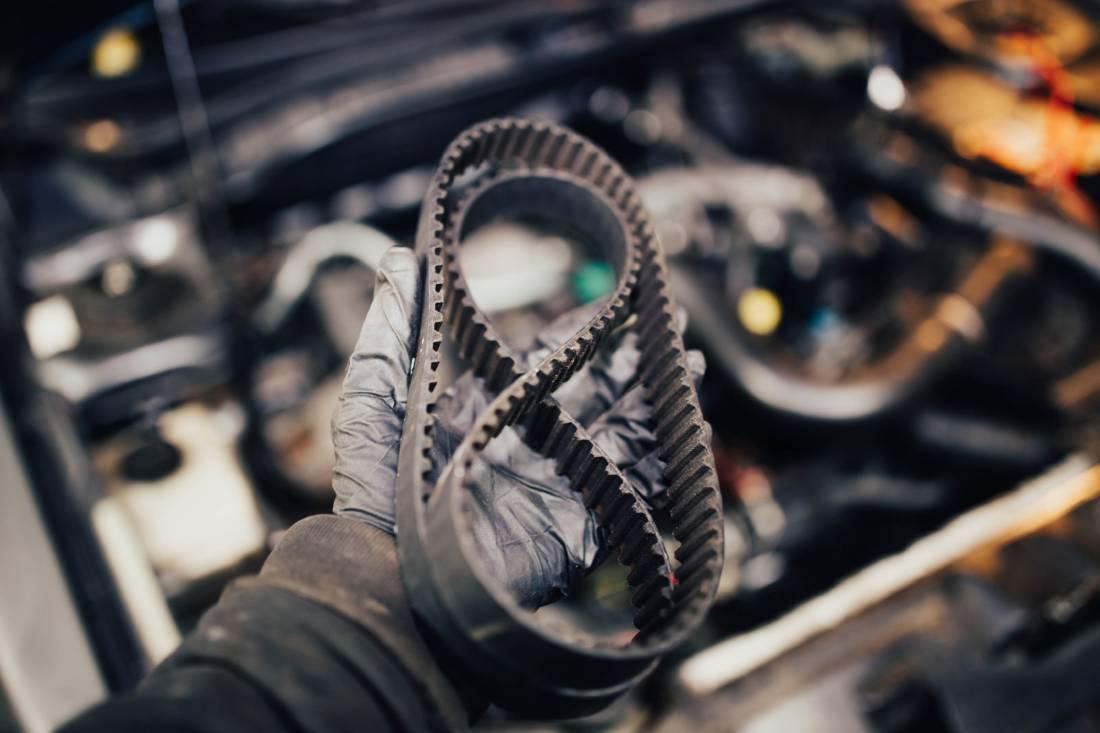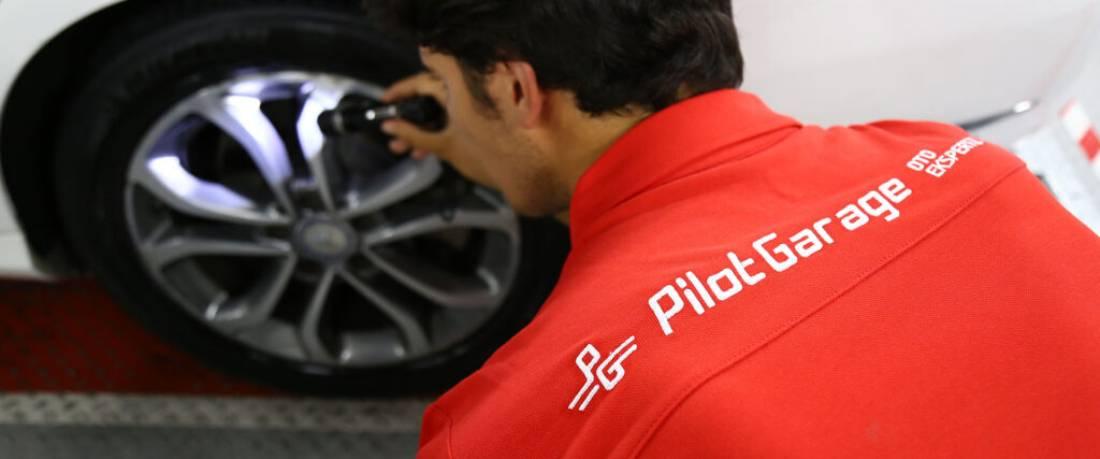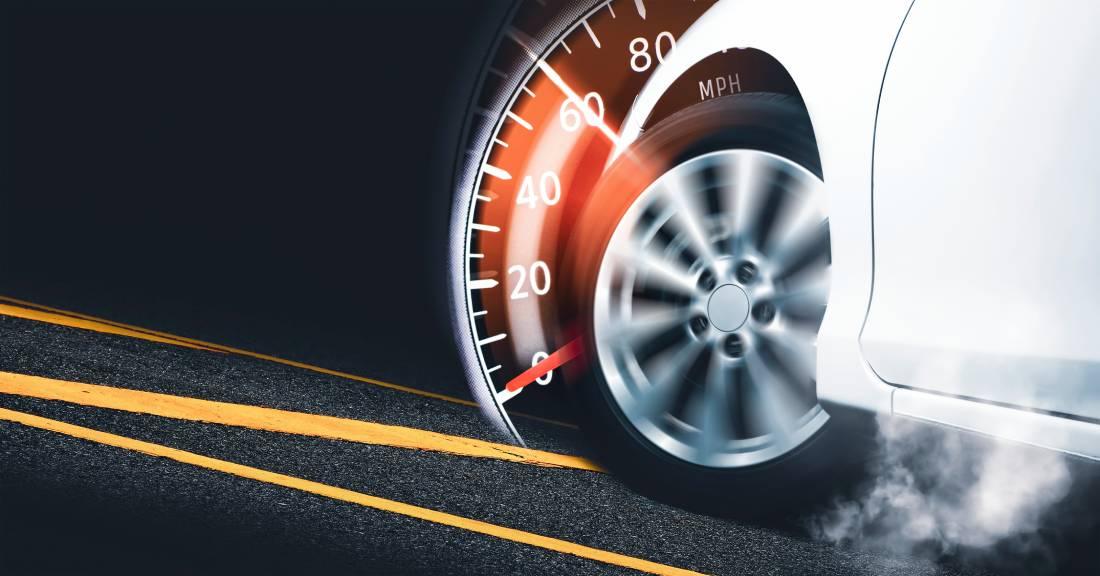
- What is a Timing Belt?
- What Does a Timing Belt Do?
- How Does the Timing Belt Work?
- What Happens If the Timing Belt Breaks?
- Signs of Timing Belt Failure
- When Should the Timing Belt Be Replaced?
- When to Replace the Timing Belt
- Timing Belt Replacement
- How to Replace the Timing Belt
- What to Do When the Timing Belt Breaks
- Stop the Vehicle Immediately
- Do Not Attempt to Start the Vehicle
- Call for Roadside Assistance
- Tow the Vehicle to a Service Center
- Replace the Timing Belt
- Check the Other Engine Parts
- What is the Timing Belt? What Happens If It Breaks? Frequently Asked Questions
- When Should the Timing Belt Be Replaced?
- Why Does the Timing Belt Make Noise?
- Why Does the Timing Belt Slip?
- How Do We Know If the Timing Belt Is Worn Out?
- How Much Does It Cost to Replace the Timing Belt?
- When Should the Timing Belt Be Replaced in Gasoline Vehicles?
- Why Does the Timing Belt Break?
- Sudden Drop in Engine Performance
- Engine Not Starting Despite Turning the Key
- Engine Stopping Suddenly
- Engine Running Unevenly or Noisily
- Abnormal Noises from the Exhaust
- Warning Lights on the Dashboard
Timing belt is a component in internal combustion engines that synchronizes the movement of the valves and pistons. The integrity of this belt during engine operation ensures efficient engine performance and smooth power production. Made of rubber and fiberglass, the timing belt is durable, but it wears out over time. Therefore, regular maintenance and replacement are necessary.
What is a Timing Belt?
The timing belt is a mechanism in car engines that ensures the valves and pistons work in harmony. This belt connects the rotating parts of the engine, preventing overheating and mechanical failures. Typically made from rubber, the timing belt maintains the engine's operating order, increasing fuel efficiency. A healthy timing belt extends the engine's lifespan and reduces maintenance costs.
What Does a Timing Belt Do?
The timing belt ensures the synchronization of the pistons and valves within the engine, ensuring smooth engine operation. This process enables the engine to produce power efficiently and optimize fuel consumption. Otherwise, the engine's operation can become irregular, leading to malfunctions. The belt also prevents the engine from overheating, safeguarding internal components from damage.
How Does the Timing Belt Work?
The timing belt ensures the opening and closing of the valves by transferring motion from the crankshaft of the engine. The rotation of the crankshaft causes the gears on the belt to turn, allowing the valves to open and close at the correct time. This process ensures that the air-fuel mixture in the engine is injected and burned properly. The proper operation of the timing belt contributes to the engine running smoothly and efficiently.
What Happens If the Timing Belt Breaks?
Timing belt failure disrupts the synchronization between the pistons and valves in the engine. This situation can lead to serious engine damage and may require extensive repairs. The belt's failure can cause the engine to stop suddenly, and further damage may occur due to the collision of some parts. Therefore, timing belt failure is a highly dangerous situation for vehicle owners.
Signs of Timing Belt Failure
The signs of timing belt failure include:
- Sudden Engine Shutdown
- Engine Not Starting Despite Turning the Key
- Irregular or Noisy Engine Operation
- Abnormal Noises from the Exhaust
- Sudden Drop in Engine Performance
- Warning Lights on the Dashboard
When Should the Timing Belt Be Replaced?
Replacing the timing belt is crucial for the engine's health. Usually, the recommended replacement interval is specified in the vehicle's maintenance manual. Vehicles may require a timing belt replacement at certain mileage intervals or based on time. During regular maintenance, the condition of the belt should be checked, and if any wear or damage is found, it should be replaced immediately. This practice helps maintain the integrity of the engine and prevents unexpected failures.
When to Replace the Timing Belt
The timing belt typically needs to be replaced between 50,000 and 100,000 kilometers. This period may vary depending on the type of vehicle, its use, and maintenance conditions. Factors such as heavy traffic and short-distance travel can shorten the belt's lifespan. Therefore, the condition of the timing belt should be checked at regular intervals. Replacing the belt is crucial for the engine's health and performance.
Timing Belt Replacement
Timing belt replacement should be performed with the correct materials and techniques. During this process, the technicians performing the engine maintenance should be careful. When replacing the belt, the timing belt gears and the water pump should also be checked. This way, the lifespan of the timing belt is extended, and maintenance needs are reduced.
How to Replace the Timing Belt
To replace the timing belt, first, open the engine hood and remove the timing belt cover. Then, check the gears to which the belt is connected, as well as the tension reduction mechanism. After removing the old belt, install the new timing belt properly and position it on the gears. At this stage, adjust the belt tension, perform an engine test, and check the accuracy of the installation.
What to Do When the Timing Belt Breaks
It is important to act immediately when the timing belt breaks. First, safely stop the vehicle. In this situation, the engine should be turned off, and the vehicle should be moved to a safe area. Such situations can jeopardize the safety of the driver and passengers, so you should be cautious. A broken timing belt can cause severe damage inside the engine, so taking necessary precautions is critical.
Here are the steps to take when the timing belt breaks:
- Do Not Attempt to Start the Vehicle
- Call for Roadside Assistance
- Tow the Vehicle to a Service Center
- Replace the Timing Belt
- Check the Other Engine Parts
Stop the Vehicle Immediately
If your timing belt breaks, the first thing you should do is stop the vehicle immediately. This is an important step to prevent further damage to the engine. To safely pull over, you should signal right and stop. After turning off the engine, don't forget to remove the key from the ignition. This way, you protect the engine and create a safe environment for intervention.
Do Not Attempt to Start the Vehicle
When the timing belt breaks, it is absolutely wrong to attempt to start the vehicle. This could cause further damage to the mechanical parts inside the engine. Starting the vehicle may cause additional damage to the engine's other parts due to the imbalance caused by the broken belt. Therefore, it is best to seek professional help before starting the vehicle. To prevent engine damage, avoid starting the vehicle.
Call for Roadside Assistance
In case of a timing belt break, calling for roadside assistance is an important step. After safely stopping the vehicle, contact a service provider for assistance. In case of an accident or breakdown, professional help offers more effective solutions. Trying to intervene on your own could be dangerous, so wait for experts to arrive. Calling for help increases the safety of the driver and passengers.
Tow the Vehicle to a Service Center
For a broken timing belt, the healthiest solution is to tow the vehicle to a service center. This process is necessary to prevent further engine damage and to diagnose the issue. Professional technicians who perform diagnostic analysis can check the engine and carry out the necessary repairs. Repairs caused by a broken timing belt should be done by experts. This ensures that your vehicle will run safely and efficiently again.
Replace the Timing Belt
After the timing belt breaks, replacing the belt is absolutely necessary. However, before replacing the belt, it is important to first check the other parts of the engine. The broken belt may have caused damage to some parts of the engine. Therefore, inspecting the engine thoroughly before replacing the timing belt is a critical step in identifying any potential issues. This way, you can ensure that your vehicle will operate healthily again.
Check the Other Engine Parts
After a timing belt breaks, it is crucial to check the other parts of the engine. Some parts may have been damaged due to the belt’s failure. Therefore, an expert technician should examine the engine thoroughly. Valves, pistons, and other mechanical parts should be assessed, and necessary repairs or replacements should be made. Ensuring the integrity of the engine is a critical process to restore the vehicle’s performance.
What is the Timing Belt? What Happens If It Breaks? Frequently Asked Questions
Frequently asked questions about the timing belt help vehicle owners learn more about the belt. These questions include when the timing belt should be replaced, why it makes noise, and more. By answering these questions, awareness is raised about the importance and maintenance of the timing belt. This way, drivers will be more careful in maintaining engine health.
When Should the Timing Belt Be Replaced?
The timing belt generally needs to be replaced between 50,000 and 100,000 kilometers. This distance can vary depending on the vehicle’s maintenance and usage conditions. Long-term neglect shortens the belt's lifespan, while regular maintenance allows it to be used for a longer period. It is best to check your vehicle’s service manual to learn the replacement time for the timing belt.
Why Does the Timing Belt Make Noise?
The timing belt can make noise due to wear or incorrect tension. Especially when the belt is old, abnormal noises occur during engine operation. These sounds indicate that the belt may be slipping on the gears or not sitting properly. If the timing belt is not inspected, the risk of it breaking increases. Therefore, if any noise is detected in the belt, it must be checked by an expert immediately.
Why Does the Timing Belt Slip?
The timing belt can slip due to incorrect tension settings, overheating, or the use of low-quality materials. Slipping means the belt loses its grip on the gears, which negatively affects the engine's operation. To keep the belt in good condition, it should be properly tensioned and used under appropriate conditions. Any slippage indicates that the belt needs to be replaced.
How Do We Know If the Timing Belt Is Worn Out?
To determine if the timing belt is worn out, there are some signs to watch for. If there is wear, cracks, or deformation on the belt, this can be visually inspected. Additionally, hearing abnormal sounds from the engine while it runs is another indication that the belt is nearing the end of its life. A decrease in performance and a sudden rise in engine temperature are other signs that the belt needs replacement.
How Much Does It Cost to Replace the Timing Belt?
The cost of replacing the timing belt depends on various factors, such as the cost of the spare part and labor fees. Therefore, obtaining quotes from different services will help you find the most cost-effective option. The quality of the belt also affects the price.
When Should the Timing Belt Be Replaced in Gasoline Vehicles?
In gasoline vehicles, the timing belt typically needs to be replaced between 60,000 and 90,000 kilometers. However, this period may vary depending on the vehicle's usage and maintenance schedule. Frequent high-rpm usage can shorten the belt's lifespan. Vehicle owners should regularly check the timing belt and pay attention to the maintenance records.
Why Does the Timing Belt Break?
The timing belt may break due to wear, age, incorrect installation, or excessive heat. Over time, the belt's structure deteriorates, and its durability decreases. A break can cause serious damage to the engine and completely stop the vehicle. Therefore, it is extremely important to regularly inspect and replace the timing belt to reduce the risk of it breaking. Paying attention to the vehicle's maintenance helps preserve the integrity of the timing belt.
Sudden Drop in Engine Performance
A sudden drop in engine performance is one of the symptoms of a timing belt failure. The vehicle may struggle to accelerate and start operating unevenly. This condition endangers driving safety and can lead to accidents. The engine not operating smoothly could be a sign of a broken belt or another mechanical failure. In such a case, immediate technical support is needed.
Engine Not Starting Despite Turning the Key
If the engine doesn’t start despite turning the key, it may indicate a broken timing belt. If the engine makes a sound but doesn’t respond, the belt should be checked. This could be a sign of a mechanical failure or a broken timing belt. It is best not to try to start the vehicle and to seek professional help.
Engine Stopping Suddenly
Engine stalling suddenly is one of the most serious symptoms of a timing belt failure. This can lead to the driver losing full control and may cause accidents. The engine's sudden stop can also damage internal mechanical parts. In such a case, it is important to stop the vehicle immediately and conduct a safety check. Attempting to restart the engine is definitely not recommended.
Engine Running Unevenly or Noisily
Engine running unevenly or noisily indicates an issue with the timing belt. Especially when the belt is worn or close to breaking, noticeable changes in the engine sound occur. This suggests the engine is not running efficiently and may signal the beginning of a failure. Uneven engine operation is a critical sign that the belt needs to be inspected immediately. These symptoms should be taken seriously.
Abnormal Noises from the Exhaust
Abnormal noises from the exhaust indicate that the timing belt health is at risk. If the engine is running and unusual noises come from the exhaust, this may be a sign of a mechanical failure. A broken or worn belt can affect the engine's smooth operation, causing the exhaust sounds to change. In this case, the timing belt and the engine should be inspected.
Warning Lights on the Dashboard
Warning lights on the dashboard should be taken seriously as they indicate potential issues with the engine. These lights often signal a problem with the timing belt or the engine. They alert the driver to the risk of a belt failure or other mechanical issues. Vehicle owners should take these warnings seriously and seek technical support as soon as possible.




